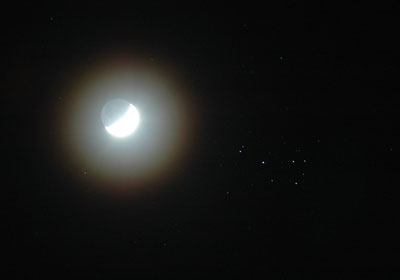Whether with the naked eye or in the largest telescope, you won‘t see the stars evenly distributed in the sky, instead they form smaller and larger groups.
If you are only “looking” at star clusters instead of observing them, you‘ll probably soon lose your interest in them because you‘ll only see a bunch of stars. Star clusters are only really fascinating when you take a closer look. Then you can recognize patterns in them. Some clusters are characterized by star chains, while others will be dominated by a few bright stars or have a characteristic shape that is reminiscent of objects or letters. Only by comparing different open clusters with each other, you‘ll notice their diversity. It is very helpful to run a small observation log to record descriptions or even small sketch.

The term asterism describes random star patterns that result only from a perspective effect. Similar to optical double stars, we can see here several stars in the same viewing direction but at different distances, which form a striking pattern in the sky. Famous asterisms are for example the „coat hanger“ (Collinder 399 in the constellation Vulpecula) or the „engagement ring“ near the North Star, but even the large constellations can be described as very large asterisms.
Open clusters are groups of mostly young, bright blue giant stars that have formed only a few million years ago together from a cloud of gas and therefore are also spatially close to each other. Over time, the stars move further and further away from each other until the cluster has dissolved after a few hundred million years. During this time the stars circle around the galaxy several times and the most massive stars, which consume their hydrogen storage fastest, finish their life cycle. Based on the concentration of the stars and the proportion of young, blue giants we can estimate the age of a star cluster. The concentration of a star cluster, however, also depends on its distance from the Sun – close star clusters appear more extensive than far away ones. Distant star clusters shimmer only as a small spot of light, which can be resolved only at high magnification into individual stars, while near star clusters are so large that they may be resolved by a pair of binoculars into a heap. Pleiades and Hyades, for example, are so extensive that they are discernable with the naked eye and no longer fit into the field of larger telescopes, and the five stars of the Big Dipper which belong to the star cluster Collinder 285 hardly give the impression as if they belong together.
Star associations are extensive groups of young, hot stars that just like stars in open clusters were formed together and also move in the same direction through space, but they are too far apart for gravity to keep them together. With diameters between 100 and 600 light-years, they are much extended and mark parts of the spiral arms of our galaxy. Among the best known and most beautiful star associations is the Perseus OB 3 association (α-Persei association or Melotte 20) around α Persei.
Star clouds are star-rich areas in our sky which contain lots of stars and star clusters. Especially the constellation Sagittarius is known for star clouds as we look there in the direction of the star-rich center of our galaxy.
